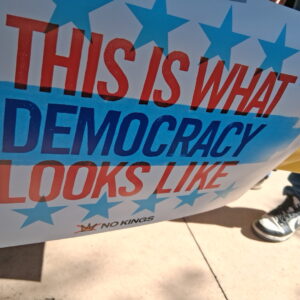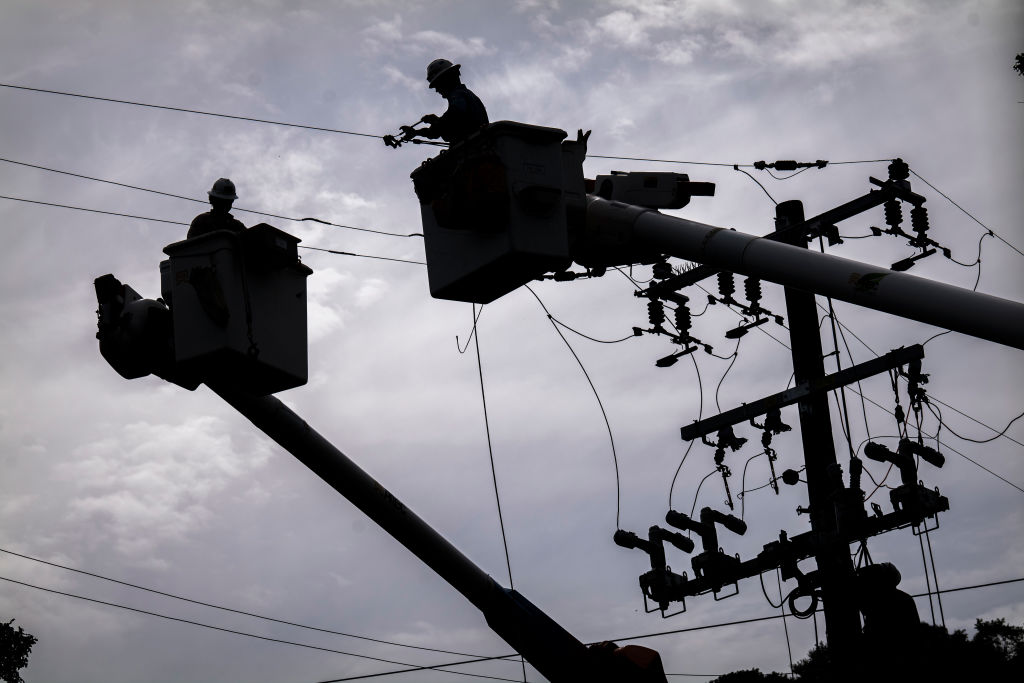
Alysa Liu ends long U.S. drought at women’s figure skating world championships
March 29, 2025
Delta plane and Air Force jet ordered to maneuver to avoid collision near DCA airport
March 29, 2025
In 2011, then San Francisco mayor Ed Lee, recently appointed after Gavin Newsom vacated the role to become California’s lieutenant governor, signaled the city elite’s further embrace of Silicon Valley when he helped facilitate the transformation of a vacant department store on Market Street into Twitter’s new headquarters.
Working to avert the social media app’s threat to flee the city, Lee helped it relocate its headquarters from “SoMA” (short for South of Market, an industrial neighborhood dominated by, increasingly, converted warehouses) to a more centrally located 1939 art deco building spanning an entire city block that, since the mid 1980s, had been vacant of its former retail tenants.
To lure Twitter, Mayor Lee designated “Mid-Market” as a new tech corridor. Inserted into the hollowed-out physical spaces of the city’s industrial past, the growth of tech held the promise of trickle-down economic development. At least, this was the justification for allowing Twitter and the tech firms who followed it to the neighborhood to be exempt from payroll taxes — the value of this tax break was later estimated to be about $70 million.
Fast-forward to the fall of 2023 when Elon Musk, new owner of the company San Franciscans had subsidized, took to “X, formerly Twitter” with a series of attacks on a member of the city’s Board of Supervisors, its sole democratic socialist member: “Dean Preston should be in prison for what he’s done to San Francisco.” Around the same time, Musk committed to joining right-wing venture capitalist Garry Tan in contributing $100,000 as seed funding for the effort to remove Preston from office (Tan had pledged $50,000).
Tan, who heads the tech incubator Y Combinator, has sought to turn the techno-utopian project of transcending all limits — including regulations he sees as the vestiges of a declining liberal state — onto the city itself. He identifies as a leader of the “network state” movement alongside Balaji Srinivasan, who has reimagined zones of San Francisco as a battlefield of conflict between “greys,” tech workers, and “blues,” the liberal citizenry. In his telling, the greys are cultivating close social ties with the police as part of their goal of “cleansing” the city of blues.
Tan and company’s successful campaign to defeat Dean, as he is popularly known, on the November 2024 ballot should be seen as a signal achievement of the techno-libertarian effort to remake the “failed” San Francisco. (Their larger project to capture local electoral power has been covered elsewhere.) X/Twitter eventually abandoned Market Street for Texas in 2023; Tan has since followed Musk — now leading President Donald Trump’s shock offensive on the federal bureaucracy — to Washington, DC, also working to implement his political agenda on a broader scale.
But what, exactly, did Dean do to draw the ire of these Silicon Valley billionaires?
Even before the pandemic, the majority of the city’s elected leaders — including moderate Democrats who had backed Lee’s idea — had come to the realization that the “Twitter tax break,” as it came to be known, was a mistake. A group of researchers at the University of California, Berkeley, note that the tax scheme came about at a crucial moment: In the wake of the 2008 recession, commercial office vacancy rates in SF climbed to nearly 18 percent (in the dot-com era, the rate was 1 percent).
But over the next few years, Silicon Valley’s largest firms shifted the majority of their employees up to the city. The resulting building boom was most dramatically registered in the figure of the Salesforce Tower, which is adjoined by a several-block-long elevated park, giving it the feeling of a suburban tech campus transported into the Financial District. In short, Big Tech was remaking San Francisco with or without a tax subsidy.
Meanwhile, the Mid-Market neighborhood had not been revitalized (almost all new development remained in SoMA and the Financial District), and worse, the city’s coffers did not benefit that much from the influx of affluent tech workers. Tech has never been the city’s dominant industry by employment, but the flood of its wealth has driven up housing prices for everyone else.
Geographer Richard Walker argues that the scale of financial investment in San Francisco’s property markets has had a huge impact on inflating property values, driving housing costs to much higher rates than can be explained simply by demand outpacing supply, which has grown into a dominant explanation of affordable housing shortages. The resulting visibly growing ranks of the unhoused poor (the vast majority of whom were recently housed locally) has in turn only fueled a further lurch to the Right among the new money overlords.
The project to transform Downtown San Francisco into an urban Palo Alto grew into an actual catastrophe in 2020, when tech firms shuttered their offices and mostly never reopened, imperiling the city-center economy that had been built around it. On the other side of the Bay Bridge, Downtown Oakland has suffered a similar fate, as Uber backed out of a plan to redevelop a disused Sears into their new headquarters. That building too sits mostly empty, surrounded by glistening new apartment buildings with too-high vacancy rates.
Meanwhile, in response to the pandemic shutdown, Supervisor Dean Preston oversaw the passage of several programs that halted evictions and created new housing stock (such as repurposed hotels for those living on the streets), stemming the bleeding of an unemployment crisis compounded by the epidemics of opioids and fentanyl. Efforts to implement progressive taxation measures, beginning with 2018’s Proposition C that levied a tax on large corporations’ “gross receipts” to fund homelessness services, have partially reversed city leaders’ earlier mistakes and helped San Francisco weather these crises amid longer-term federal and state disinvestment from cities in the neoliberal era.
Within weeks of taking office in December 2019 after winning a special election, Dean began work on a new ballot measure, Proposition I. The measure passed in 2020 and has since raised at least $300 million through doubling the city’s tax on big real estate sales, called a “transfer tax.” Through Prop I, the city was able to capture $68 million on a single sale — at $1.08 billion, the second-largest real estate deal in San Francisco’s history — when a developer sold Dropbox’s former headquarters to a private equity firm. The year before, the builder’s owner had spent a quarter of a million dollars trying to prevent the increased tax.
Despite $5 million in opposition funding, voters across the city passed Prop I by a wide margin. These funds were used to keep tenants in their units at an impressive rate during the pandemic. Aided by COVID-era federal programs that reflected a temporary “break” from decades of neoliberal policy, Dean spearheaded efforts to pay back rents and implement strong eviction protections that averted the displacement of over 20,000 people.
At the same time, Prop I inspired a backlash from landlords, some of whom saw themselves as being taxed “to pay the back rents of their tenants,” Dean told Jacobin. “Billionaires saw [pandemic programs funded by the] federal government that would be time limited,” which they accepted. “But they [also] saw the city headed in a direction of taxing in order to meet basic needs.”
Thanks in large part to the work of Dean’s office, San Francisco’s government has been redistributing wealth from a booming tech economy downward. His approach marks an alternative to the public subsidy of private business and real estate, which is essentially a transfer of wealth into the hands of those who don’t need it at the expense of those who do.
Dean’s office had a record of accomplishment that included the creation of: free public transit for youth, overdose prevention programs, the nation’s first municipal public bank, and the successful passage of a ballot measure that moved elections for mayor to overlap with presidential elections. But his aggressive agenda on housing, informed by years spent as a tenant attorney and tenants’ rights activist, illustrates the importance of a coherent program to materially combat inequality.
Starting in the 1970s, the early pangs of the deindustrialization of San Francisco’s maritime-trade-dominated economy led to the emergence of homelessness on a large scale. Dianne Feinstein — who characterized homeless encampments as temporary effects of “stagflation” — was the first mayor to oversee what has persisted as the dominant response, using law enforcement and “sweeps” to merely displace encampments from one neighborhood to another.
At base, the persistence of homelessness in San Francisco reflects the explosion of the price of housing generally alongside the erosion of existing affordable housing. While the city’s tenants have fought for and implemented defensive measures to protect existing affordability such as rent control and eviction protections, the business model of corporate landlords (who hold an increasing share of the market due to financialization of the industry) is frequently predicated on systematic exploitation of loopholes in these laws. Government programs to raise funds for affordable housing have been similarly ill-suited to holding down prices and preventing displacement because they do not challenge the market’s tendency to push land values and rents ever higher.
The goal of Prop I, the real estate transfer tax, is ultimately to raise funds for the city to build the social housing and pursue land use policies that are not currently possible through state and federal programs and given current municipal fiscal realities. Since the 1970s, programs like public housing have undergone multiple rounds of disinvestment and privatization wherein policymakers “take all the money away and then say it failed,” according to Dean.
Dean explains that the many millions generated by Prop I could secure further billions of dollars in bond financing for large-scale social housing development. The annual revenues generated by Prop I fluctuate (it is estimated the city could generate up to $150-180 million a year in a hot real estate market through the tax), but it is on track to raise nearly $500 million between 2020 and 2026.
While the majority of the measure’s proceeds have been allocated to affordable housing — paying back rents and buying buildings as well as funding some new development — the potential to finance large-scale new social housing developments is still going unrealized. This hasn’t yet happened, Dean says, due to a “real estate–aligned mayor who fought investment in social housing at every step.”
Social housing holds out the potential for San Francisco to build permanently affordable housing units at a scale to do more than just stem displacement. As an alternative to moderate Democrats’ support of existing programs for “affordable” and market-rate housing, social housing development could meet the needs of much greater numbers of rent-burdened San Franciscans.
Dean’s 2020 reelection and five successful ballot measures indicated a mandate for an agenda based on “not just tinkering around the edges, [but] trying to invest in stuff that fundamentally transforms lives in San Francisco.” Tan and others (it does not appear that Musk followed through on his pledge to contribute) fueled a multiyear disinformation campaign about Dean’s record, ironically tying the housing crisis around his neck by painting him as a roadblock to the development of market-rate housing that many argue is necessary to (eventually) bring down housing prices.
They falsely claimed that Dean was responsible for blocking tens of thousands of new units of housing from being developed, a message that appears to have played well with voters in wealthier parts of the district, which voted for his opponents at higher rates than working-class sections did. (Dean argues that this was a change in messaging from previous elections, where his opponents painted him and his ballot measures as too radical or socialistic.)
Tan and allies ultimately spent over $300,000 on their “Dump Dean” misinformation effort, in addition to direct donations to his opponents’ campaigns. They fielded three candidates to run against him in a concerted ranked-choice strategy, the most prominent of whom and the eventual victor, Bilal Mahmood, ran on a generically progressive platform, save for greater emphasis on market-rate housing — benefiting from the false narrative of Dean’s obstructionism — and increased policing. (Dean won the most first-choice votes, but had too few second-choice votes to win.)
Dean’s major accomplishments in just five years in office will have long-term consequences (at least as long as they remain law), especially in keeping rent-burdened working-class and poor tenants in their homes and off the streets. The more impactful aspects of Dean’s program were enacted against the wishes of the political establishment; they were achieved at the ballot box through the efforts of everyday San Franciscans, most of them organized through groups such as the city’s Democratic Socialists of America (DSA) chapter. This includes skilled organizers such as Jen Snyder and Avery Yu, who have gone on from Dean’s office to run successful pro-tenant and pro-worker ballot measures in cities across the state.
In early December, DSA San Francisco’s postelection general meeting was held a little more than a mile down the road from where the abandoned X Corporation headquarters sits. Members filled the large hall of the Redstone Building, which was built in 1914 as the San Francisco Labor Temple, to honor Dean with multiple standing ovations while also celebrating the second election in recent memory of a DSA-backed candidate to the Board of Supervisors, Jackie Fielder, a leader in efforts to establish a public bank in San Francisco. Fielder has promised to keep pushing forward the pro-worker, redistributive housing agenda that Dean championed on the board.
While Dean is no longer in office, his accomplishments suggest an alternative in city politics to the downward spiral of deregulation and subsidy of the wealthy, and the reactionary politics that the failure of such policies ultimately inspires. Those who follow in his footsteps will undoubtedly keep having to contend with the Garry Tans and Elon Musks of the world.
Great Job Eric Peterson & the Team @ Jacobin Source link for sharing this story.

















